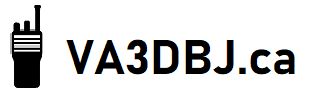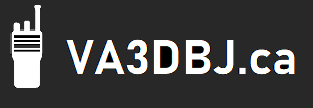08/02/2023
ARRL The National Association for Amateur Radio®, as part of its mission to protect Amateur Radio, has filed comments against a proposal that would introduce high-power digital communications to the shortwave spectrum that in many instances is immediately adjacent to the Amateur HF bands.
The “Shortwave Modernization Coalition” (SMC), which represents certain high-frequency stock trading interests, filed the petition with the Federal Communications Commission (FCC). ARRL responded on behalf of its members and the 760,000 licensees of the Amateur Radio Service in the US.
The ARRL Laboratory performed a detailed technical analysis over several months to determine if the proposed rules would affect operations on the bands allocated to Radio Amateurs that are inter-mixed with the Part 90 bands in the spectrum in question.
ARRL’s analysis determined that, if the proposed rules are adopted, the new operations inevitably will cause significant harmful interference to many users of adjacent and nearby spectrum, including Amateur Radio licensees. Ed Hare, W1RFI, a 37-year veteran of the ARRL Lab and internationally recognized expert on radio frequency interference, was the principal investigator on the study. Hare concluded the petition should not be granted. “This petition seeks to put 50 kHz wide, 20,000-watt signals immediately next to seven different amateur bands with weaker protections against interference than required in other services,” said Hare.
In its formal opposition, ARRL stated, “That destructive interference would result if operations commenced using anything close to the proposed maximum levels.”
ARRL’s filed comments highlight flawed analysis and incomplete data submitted by the petitioners. It noted the petitioners “…significantly understate the harmful interference that is not just likely, but certain, if the rules proposed by SMC are adopted as proposed. It is noteworthy that SMC’s proposed rules would provide less protection than the much-lower power amateur radio transmitters are required to provide Part 90 receivers.” ARRL’s opposition also noted that there was no reported tests conducted with Amateur or other affected stations, but referenced a spectrum capture in the Comments filed with the Dayton Group that showed actual interference into the Amateur 20-meter band from one of the High Frequency Trading experimental stations.
Part 90 HF rules currently authorize a maximum signal bandwidth equal to a voice communications channel, at up to 1000 W peak envelope power (PEP). The petition seeks multiplication of signal width, greater transmitted power, and weaker rules that protect users of adjacent spectrum. ARRL’s comments expose the likely fallout:
“Incredibly, notwithstanding the significant increase in potential interference that would result from using digital schemes with 50 kHz bandwidths and 20,000 watts of power, SMC also proposes to substantially lessen the protections required to protect adjacent and neighboring licensees. SMC proposes [out-of-band emissions] limits that offer less protection than the existing Part 90 limits and would actually permit no attenuation (0 dB) at the edge of adjacent allocations, many of which are bands allocated to and heavily used in the Amateur Radio Service. Consistent with lessening protections while increasing the potential for harmful interference, SMC also proposes a lower limit for spurious emissions. SMC would reduce the existing protection of -73 dB for the applicable 1000-watt power limit to just -50 dB protection for their proposed 20,000-watt limit. Due to the much wider 50 kHz proposed bandwidth, the resulting interference would penetrate deep into the adjacent Amateur bands.”
The proposal has been assigned FCC Docket No. RM-11953. While the period for commenting on the petition has now closed, replies to comments in the record may now be submitted.
Hundreds of licensed Radio Amateurs filed comments in the Docket, expressing overwhelming opposition to the proposal. Those interested may read ARRL’s full comments and the results of the technical analysis, which are included in the filing. “If granted as written, this would be devastating to Amateur operation for many tens of kHz into our bands,” said Hare.
ARRL will continue to advocate for its members and the Amateur Radio Service in this proceeding.
About Amateur Radio and ARRL
Amateur Radio Service licensees use their training, skills, and equipment to practice radio communications and develop radio technology. Amateur Radio Operators volunteer their qualifications and equipment for communications duty in public service and during emergencies. Amateur Radio also provides a basis for hands-on STEM education and pathways to careers.
ARRL The National Association for Amateur Radio® was founded in 1914 as The American Radio Relay League, and is a noncommercial organization of Radio Amateurs. ARRL numbers within its ranks the vast majority of active Radio Amateurs (or “hams”) in the US and has a proud history of achievement as the standard-bearer in promoting and protecting Amateur Radio. For more information about ARRL and Amateur Radio, visit www.arrl.org.












